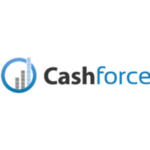Cashforce and smart cash forecasting
| 03-04-2018 | treasuryXL | Cashforce |
 As stated in our last blog, on Tuesday 27th March 2018, treasuryXL attended a seminar in Amsterdam organised by TIS about optimizing cash flow. The last speaker at this event was Nicolas Christiaen, mananging partner at Cashforce. They are a fintech leader in Cash forecasting & Treasury solutions for corporates. They took the opportunity to explain to all the attendees what their product is and how it works. In this article we shall attempt to provide an insight into what we learnt.
As stated in our last blog, on Tuesday 27th March 2018, treasuryXL attended a seminar in Amsterdam organised by TIS about optimizing cash flow. The last speaker at this event was Nicolas Christiaen, mananging partner at Cashforce. They are a fintech leader in Cash forecasting & Treasury solutions for corporates. They took the opportunity to explain to all the attendees what their product is and how it works. In this article we shall attempt to provide an insight into what we learnt.
Cashforce focuses on automation and integration within cash forecasting and treasury management systems. They connect the Treasury department with other departments within a business – offering full transparency into the cash flow drivers, resulting in accurate and efficient cash flow forecasting. They also offer a flexible forecasting method which we shall explain later.
Forecasting is a subject that can cause irritation within a company. It requires different departments to collaborate on a regular basis and provide consistent information which needs to grouped together to present a complete overview of the expected cash movements for the agreed time period. This input encompasses accounts payable, accounts receivable, procurement, projects, HR, treasury etc. All this information needs to be presented in a consistent format so that everything can be aggregated. Problems arise when data is not delivered, or delivered too late, or inaccurate.
The solution would appear to be a single method to extract all the relevant data from all the relevant databases and systems and to have this incorporated together with the correct running opening bank balances.
Cashforce have developed a platform that links into all the aforementioned databases and uses the agreed metrics within the different departments to arrive at a forecast. This leads to an integrated platform driven by your own systems. As the data parameters have been mapped and agreed beforehand, this means that it is possible to drill down to a very granular level to predetermined transaction details. This means you can go from the comprehensive level to overview per account, per client, per accounting group as the original chart of accounts has been embedded into the platform.
Included with the platform is a special functionality that takes into account the actual dispersal from a particular client and allows you to see how they actually performed as opposed to their agreed performance. These metrics can then also be used to adjust the forecast to the past behaviour of all component parts from the chart of accounts, enabling a forecast to be presented that reflects the actual results from the past.
It becomes possible to drill down on every single aspect with the forecast and interrogate an individual item. Furthermore, it is possible to make adjustments to the forecast and see the results, whilst also giving a data trail showing what changes were made and by whom. The ability to review different scenarios, whilst still retaining the original data, makes this solution unique from the standard cash forecasting systems.
This can lead to greater understanding of the drivers within a company’s cash, good visibility of the behaviour of an individual counterparty, more accurate ability to determine when additional funds are needed, together with the potential to map the effects of changing individual items and seeing their outcome to the complete forecast.
In conclusion, this is an original solution to an age old problem for cash management.
treasuryXL would like to thank Cashforce for illustrating their solution at this seminar. If you have any questions, please feel free to contact us.
[button url=”https://www.treasuryxl.com/contact/” text=”Contact us” size=”small” type=”primary” icon=”” external=”1″]
[separator type=”” size=”” icon=””]

 On Tuesday 27th March 2018, treasuryXL attended a seminar in Amsterdam organised by
On Tuesday 27th March 2018, treasuryXL attended a seminar in Amsterdam organised by  Christine Lagarde – the chief of the IMF – stated recently that the Eurozone countries should set up a “rainy day” fund that could be used to protect the countries in a time of economic turmoil. As the IMF is seen as the lender of last resort to the world, her words carry weight. Economies are subject to a cyclical motion – going from bad to good and then back down again. Her opinion is that closer integration is needed between the Eurozone countries to protect them from the inevitable downturn when it arrives.
Christine Lagarde – the chief of the IMF – stated recently that the Eurozone countries should set up a “rainy day” fund that could be used to protect the countries in a time of economic turmoil. As the IMF is seen as the lender of last resort to the world, her words carry weight. Economies are subject to a cyclical motion – going from bad to good and then back down again. Her opinion is that closer integration is needed between the Eurozone countries to protect them from the inevitable downturn when it arrives.
 Almost a year ago I wrote my blog “Blockchain and the Ripple effect: did it Ripple?”. Now twelve months later we may conclude it did. And even more than that. Ripple is making many waves. A lot happened both in broadening their offerings and in enlarging their network. A growing number of banks and payment providers, increasingly join RippleNet, Ripple’s decentralized global network, to “process cross-border payments efficiently in real time with end-to-end tracking and certainty”. By using the growing set of Ripple solutions they are able to expand payments offerings into new markets that are otherwise too difficult or too expensive to reach. The focus of Ripple therefor has especially moved towards emerging markets.
Almost a year ago I wrote my blog “Blockchain and the Ripple effect: did it Ripple?”. Now twelve months later we may conclude it did. And even more than that. Ripple is making many waves. A lot happened both in broadening their offerings and in enlarging their network. A growing number of banks and payment providers, increasingly join RippleNet, Ripple’s decentralized global network, to “process cross-border payments efficiently in real time with end-to-end tracking and certainty”. By using the growing set of Ripple solutions they are able to expand payments offerings into new markets that are otherwise too difficult or too expensive to reach. The focus of Ripple therefor has especially moved towards emerging markets.
 On 15th March 2018, Unilever announced its decision to domicile its headquarters exclusively in the Netherlands. This will lead to Unilever having a single legal base for the first time. Traditionally, Unilever had 2 holding companies – Unilever NV, registered and domiciled in Rotterdam the Netherlands, and Unilever PLC, registered and domiciled in Port Sunlight, England. There were 2 head offices – one in Rotterdam and the other in London. Unilever was formed in 1930 by the merger between Margarine Unie and Lever Brothers and has a dual listing in both the AEX and the FTSE index. The 2 companies operate as a single business. What are the reasons behind this decision and what are the consequences?
On 15th March 2018, Unilever announced its decision to domicile its headquarters exclusively in the Netherlands. This will lead to Unilever having a single legal base for the first time. Traditionally, Unilever had 2 holding companies – Unilever NV, registered and domiciled in Rotterdam the Netherlands, and Unilever PLC, registered and domiciled in Port Sunlight, England. There were 2 head offices – one in Rotterdam and the other in London. Unilever was formed in 1930 by the merger between Margarine Unie and Lever Brothers and has a dual listing in both the AEX and the FTSE index. The 2 companies operate as a single business. What are the reasons behind this decision and what are the consequences? Met het huidige nieuws rond beursgangen (IPOs = initial public offering) heb ik gezocht op het steekwoord beursgang op treasuryXL en vond geen resultaten. Wellicht omdat de treasury beroepsgroep communiceert in het Engels. Voor Non-Treasurers ga ik bij deze kort in op de basisbeginselen van een beursgang en waarom hier zoveel aandacht voor bestaat.
Met het huidige nieuws rond beursgangen (IPOs = initial public offering) heb ik gezocht op het steekwoord beursgang op treasuryXL en vond geen resultaten. Wellicht omdat de treasury beroepsgroep communiceert in het Engels. Voor Non-Treasurers ga ik bij deze kort in op de basisbeginselen van een beursgang en waarom hier zoveel aandacht voor bestaat.
 Treasury Intelligence Solutions GmbH (TIS)- a partner of treasuryXL, are organising a very engaging event that is being held in Amsterdam on Tuesday 27th March 2018, for corporate treasury. We have been kindly invited to attend and shall report back to you later, with our thoughts and experiences on what promises to be an interest evening. Read on for more information about this event and sign up if you find this event relevant to you and your company.
Treasury Intelligence Solutions GmbH (TIS)- a partner of treasuryXL, are organising a very engaging event that is being held in Amsterdam on Tuesday 27th March 2018, for corporate treasury. We have been kindly invited to attend and shall report back to you later, with our thoughts and experiences on what promises to be an interest evening. Read on for more information about this event and sign up if you find this event relevant to you and your company. On Tuesday 13th March 2018, RTL Z – a television channel – broadcast a “Cryptoshow” to explain how the Blockchain works and what it could mean for the future. They attempted to make the technology and information as simple as possible to show what uses the Blockchain could have in the world for consumers and businesses. One of the main areas of interest relates to Smart contracts. What are they? What are the advantages and disadvantages? What changes can they bring?
On Tuesday 13th March 2018, RTL Z – a television channel – broadcast a “Cryptoshow” to explain how the Blockchain works and what it could mean for the future. They attempted to make the technology and information as simple as possible to show what uses the Blockchain could have in the world for consumers and businesses. One of the main areas of interest relates to Smart contracts. What are they? What are the advantages and disadvantages? What changes can they bring?
